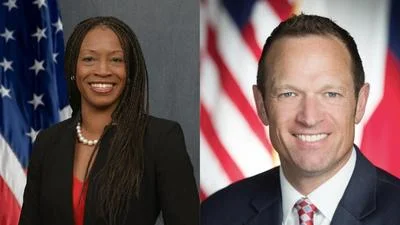Anyone who has done an addition to their house, put in a driveway or anything else that requires a permit knows that the process can be daunting. You submit an application, someone comes to review your plans and instructs you on additional actions that must be taken. This often repeats through multiple cycles with different actions required each time. The process becomes expensive, time consuming, and maybe not worth the effort.
This same frustration is shared by companies who need federal permits to conduct business. It is a frustration that has stagnated the U.S. economy for years. Congress has begun taking steps toward a remedy.
Members of the U.S. House and Senate have introduced the “Full Responsibility and Expedited Enforcement Act,” or “FREE Act.” The effort to move federal permitting toward a ‘permit by rule’ process should be encouraged. It will ultimately lead to a more efficient and predictable permitting process, which will lead to a better business climate and a stronger U.S. economy.
Permit by rule is simple. First, government pre-determines what standards an entity must meet in order to be permitted to conduct a specified activity. For example, for a factory to be built, the government might require that its design satisfy emissions and environmental standards. This step is for government policymakers to determine ahead of time and publish via statute or regulation so that all interested parties know what is required.
Second, the entity wishing to conduct the regulated activity will simply fill out an application. That application will certify that each of the pre-determined standards are met. The applicant is not required to provide proof at this stage. Simple certifications are all that are needed.
Once the application is submitted, the government’s only gatekeeping function is to check to make sure that each of the pre-determined standards have certifications. Here, the government is not given much discretion. It can only make sure the certifications are present and either acknowledge the application or respond to it by identifying which standards are not certified. If the government has done neither after a short period of time, the application is automatically deemed accepted.
This step is important because it puts the onus on the government to meet deadlines rather than defaulting to delay. Many permits are held up for months or even years while applicants wait for a bureaucrat’s stamp of approval. Often, the bureaucrat wields considerable power as he or she pores over the documentation or inspections to determine if the standards are met. This leads to an inefficient process that leaves applicants unsure if they will be able to move forward.
But with a permit-by-rule, the applicant should know up front that the project will move forward and on what timeline.
What happens if the applicant does not meet the substantive standards? The permit by rule process accounts for that. Once the project is up and running, the project is still subject to audits or reviews.
If a company expends millions or even billions of dollars to develop a project site, only to have it shut down as a result of an audit, the company would face financial ruin. There is significant incentive for the company to hold to the standards.
Permit by rule also offers the benefit of shifting the government’s focus to only bad actors. Projects performing consistently with the government’s standards will not be held up, nor will the government be forced to expend considerable resources on those projects.
The benefits are significant. First, because the process is simple, minimal resources are expended before the project begins. What was formerly an expensive process becomes affordable.
Second, because projects can get started quickly, their intended benefits can also start quickly. Additional resources are poured into the economy. Supply becomes more abundant, which makes profits more quickly for the company while also making prices cheaper for the consumer due to the increased supply.
Finally, government resources will be more efficiently used. Rather than focusing significant resources and attention on every application, government agencies only need to focus on a few projects that are not living up to the standards.
Permit by rule is a common-sense solution to a complex problem. It’s good to see that Congress has also begun to realize the benefits of this approach.
Curtis Schube is the Executive Director for Council to Modernize Governance.









